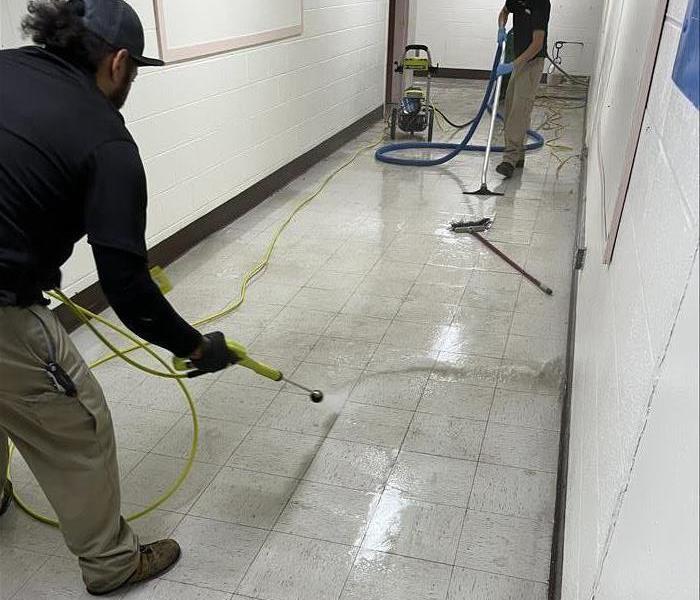Keeping Your Crawl Space Mold-Free: Prevention and Remediation Tips
7/10/2024 (Permalink)
 We discuss the causes of mold in crawl spaces and provide practical tips for prevention and remediation.
We discuss the causes of mold in crawl spaces and provide practical tips for prevention and remediation.
Mold growth in crawl spaces is a common problem faced by homeowners, and if left unchecked, it can lead to structural damage and affect indoor air quality. Understanding how mold develops in crawl spaces and implementing preventive measures can help you maintain a clean and healthy home environment. In this blog post, we'll discuss the causes of mold in crawl spaces and provide practical tips for prevention and remediation.
Causes of Mold in Crawl Spaces
Moisture Accumulation
Crawl spaces are prone to moisture buildup due to their proximity to the ground. Factors such as poor ventilation, groundwater seepage, and plumbing leaks can contribute to excess moisture in the crawl space, creating an ideal environment for mold growth.
Poor Insulation
Inadequate insulation in the crawl space can lead to temperature fluctuations and condensation, promoting mold growth. Without proper insulation, cold surfaces can attract moisture from the air, providing a breeding ground for mold spores.
Organic Material
Organic materials such as wood, insulation, and debris found in crawl spaces serve as food sources for mold. As these materials become damp, they provide nutrients for mold growth, exacerbating the problem.
Prevention Tips for Mold in Crawl Spaces
Ensure Proper Ventilation
Proper ventilation is essential for reducing moisture buildup in the crawl space. Installing vents and fans can help promote airflow and prevent stagnant air from accumulating moisture.
Maintain Gutters and Downspouts
Keep gutters and downspouts clean and free of debris to prevent water from pooling around the foundation of your home. Proper drainage will help divert water away from the crawl space, reducing the risk of moisture infiltration.
Seal Cracks and Gaps
Sealing cracks and gaps in the crawl space walls and foundation can prevent moisture from entering. Use caulk or foam insulation to seal any openings, including around pipes, vents, and utility penetrations.
Remediation Techniques for Mold in Crawl Spaces
Professional Inspection
If you suspect mold growth in your crawl space, it's essential to schedule a professional inspection. Trained technicians can assess the extent of the mold problem and recommend appropriate remediation measures.
Mold Removal
Professional mold remediation involves thorough cleaning and removal of mold-contaminated materials. Specialized equipment and techniques are used to ensure effective mold removal while minimizing the spread of spores.
Moisture Control
Addressing underlying moisture issues is crucial for preventing mold recurrence. Implementing moisture control measures such as installing vapor barriers and dehumidifiers can help maintain a dry and mold-free crawl space.
Preventing and remedying mold growth in crawl spaces requires proactive measures and professional expertise. By addressing moisture issues, ensuring proper ventilation, and conducting regular inspections, you can keep your crawl space clean and mold-free. If you need assistance with mold remediation, don't hesitate to contact a professional restoration company like SERVPRO® for expert help.






 24/7 Emergency Service
24/7 Emergency Service